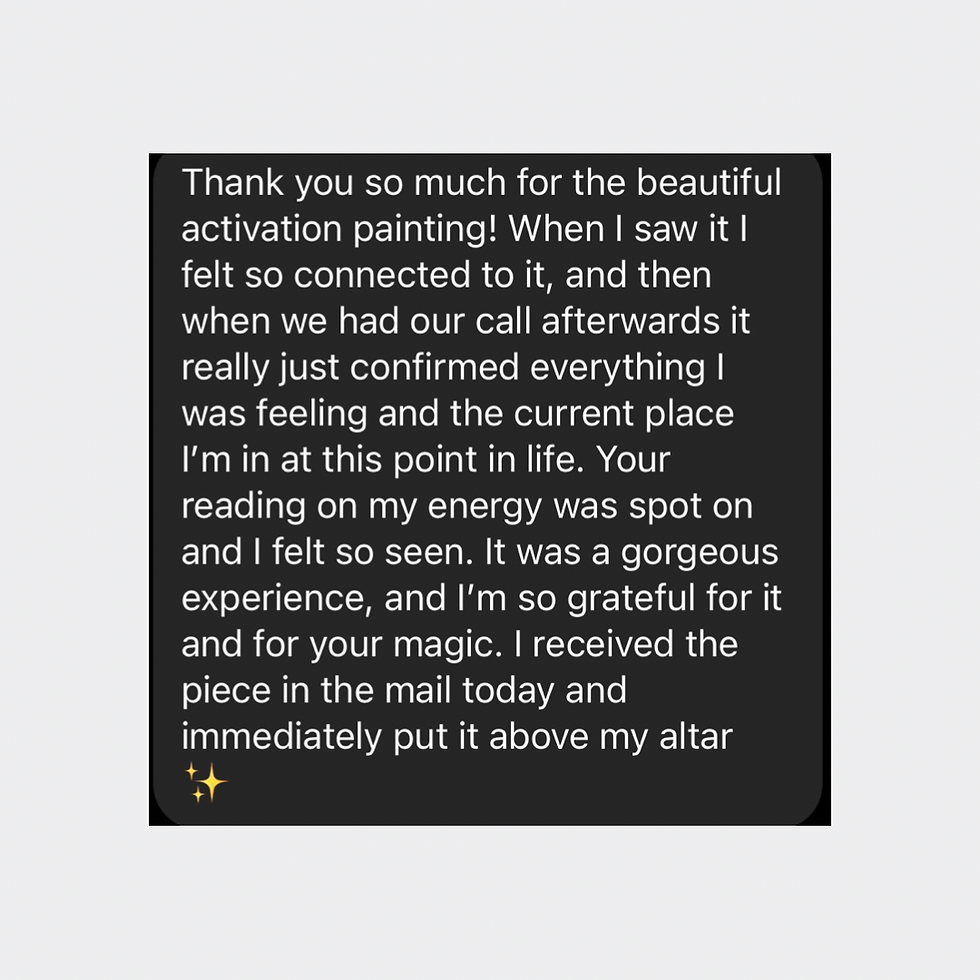- Deanna Imfeld
- May 1, 2022
- 3 min read
I believe art is a bridge to a deeper version of self. All art is a mirror of our soul; that's why what the creator experiences in making the piece will feel differently than how every viewer interprets it.
So when I started exploring creation, I had this weird sensation that everything I created wasn't mine. I had no connection to what I just spent 15+ hours making. It felt foreign to me, like I wasn't the one who actually made it and it had nothing to do with me, as an artist. I had heard artists have a hard time getting rid of their work because of the deep connection to the pieces, but I had the opposite experience. I wanted it out as soon as I finished. It didn't feel right keeping it.
Then a couple of years into making these pieces that felt so distant to me, someone reached out and wanted to buy one. They told me it felt like they had never been so seen; that everything they were experiencing in their current reality was reflected back to them within the painting. In that moment I realized that this painting was completely theirs and not mine.
It continued happening. Close friends would tell me that the landscape I made was a place very dear to them. It got to the point that I thought "well if I'm making all of these sacred places on accident, what would happen if I made it consciously?"
So I went into a meditation and then tried to paint a self-portrait with the landscape that I saw while in that state. Every time I would meditate I would go to this valley with tall grass, large beautiful clouds, and always a ladder in the center, leading up to them.

This was the first piece that I felt fully connected to my work. I realized it was Mine. It was such a clear vision of this "safe space," for me and I wanted to know if I could tap into those spaces for others.
Through this experimentation I developed a method for channeling these pieces for others, to reflect their current energy and "activate" this energy to deepen their healing, embodiment, or abundance depending on what their soul was desiring.
To be honest, I thought I was kind of insane when I started this. But, I kept having the same dream of creating these activations for others, and ever since starting this, the responses have been pretty insane.
One person I created a piece for and gave a reading to, I had told to look into herbalism, and they had JUST made the decision to get into that. Another I told to focus on pleasure and they were creating a course to help others find their pleasure and joy.



Okay so what actually is an activation painting?
When you book, I meditate and tap into your energy and spend the next 10-15 minutes just writing everything that comes up for me. These are usually pieces of the image like lotuses, or roses, or tall grass etc. And then with all of those pieces come messages about your energy. Lotuses for example might represent opening up to a new version of self, or mountains might show up to remind you to stand in trust with yourself or tap into the feeling of safety.
From these messages, I start painting and set an intention while I'm in the process; similar to creating a prayer.
Before we meet, I pull 3 cards to represent your current energy, the lesson you are learning, and what energy will come if you embody that lesson.
Each reading includes:
-an 8x 10 Giclee print of your digital activation painting
-a 30-45 minute call explaining the messages within your painting and an energy reading
-rituals and prompts to help fully embody the energy within the painting
My goal is to connect you to parts of yourself that you might not be in full trust with. My paintings are representations of your beauty and the feelings you desire to experience. Through this work I hope to activate this trust in my clients and help them move into a new phase of their being.





